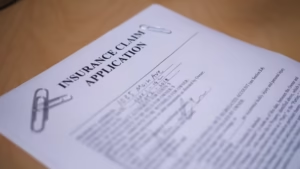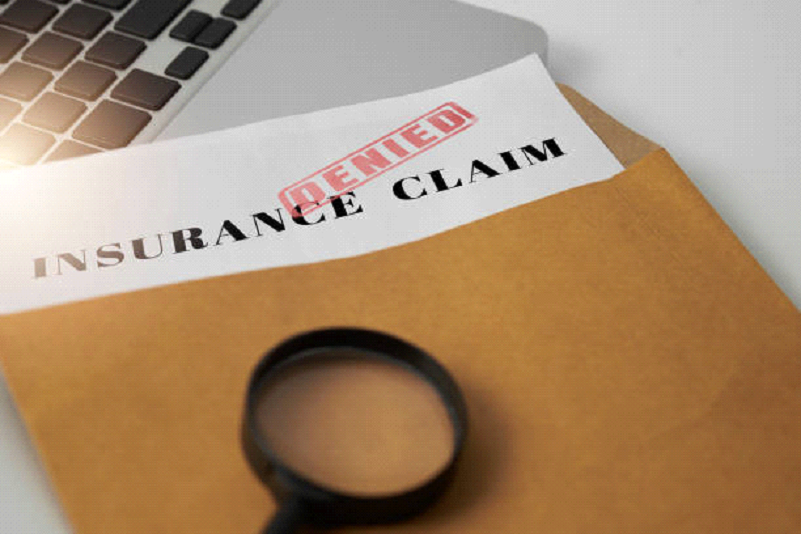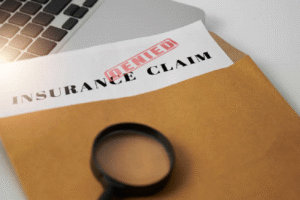There’s nothing quite as frustrating as paying your insurance premiums year after year, only to have your claim denied when you need it the most. Whether it’s auto, home, or health insurance, getting that dreaded denial letter can feel like a huge blow, especially when you’re depending on it for a crucial situation.
But here’s the good news: just because your insurance claim is denied doesn’t mean the fight is over. Many policyholders are successful in appealing denials and getting their claims approved. It’s all about knowing what steps to take next.
If you’re reading this because you’ve found yourself in this frustrating situation, don’t worry—you’re not alone. This guide walks you through everything you need to know to navigate the insurance claim denial process, step-by-step, to increase your chances of getting the coverage you deserve.
Step 1: Understand Why Your Claim Was Denied
Before you can move forward, it’s important to figure out exactly why your claim was denied. Insurers have specific reasons for rejecting claims, and understanding their reasoning is the first step toward correcting the issue.
Common reasons for claim denials include:
-
Coverage issues: Perhaps your policy doesn’t cover the specific event you’re claiming for. For instance, if you filed a claim for storm damage, but your policy doesn’t cover “flood” or “earthquake” damage, that could be the reason for denial.
-
Missing paperwork: Insurance claims require detailed documentation. If your insurer didn’t receive all the required documents, they may reject your claim outright. Sometimes this includes photos, proof of ownership, medical bills, or even police reports.
-
Policy exclusions: Every insurance policy comes with exclusions—situations or events that aren’t covered. If your claim falls under one of those exclusions (for example, if your car is damaged while driving under the influence), it could be denied.
-
Failure to meet deadlines: Insurance companies often have strict timelines for filing claims. If you didn’t file your claim within the policy’s required time frame, your claim could be denied.
Once you understand the reason for your denial, you’ll have a clearer path forward.
Pro Tip: Don’t just assume the denial was a mistake. Review the denial letter carefully to understand exactly what the insurer’s reasoning is.

Step 2: Contact Your Insurance Company
Now that you know why your claim was denied, the next step is to reach out to your insurance company. This might seem daunting, but it’s crucial to have a conversation with them to clarify the situation.
When you contact your insurer, keep these tips in mind:
-
Be calm and polite: It’s easy to get upset, especially if you’re dealing with a stressful situation, but staying calm and professional will help you get further along in resolving the issue.
-
Ask for clarification: If the reason for the denial isn’t clear or you believe there’s been a misunderstanding, ask your insurer to explain it in more detail. They may have specific documentation or policies you weren’t aware of.
-
Request a copy of your policy: If you’re still unsure about why the claim was denied, ask for a full copy of your policy and any related documents. Make sure you fully understand your coverage and exclusions.
Pro Tip: If you’re feeling unsure about how to approach the insurer, don’t hesitate to consult with an attorney or a public insurance adjuster to help guide you through the conversation.
Step 3: Review Your Insurance Policy
Now that you’ve contacted your insurer, it’s time to pull out your insurance policy and review the details. This is the key document that will clarify your coverage, exclusions, and the insurer’s requirements for filing a successful claim.
Here are a few things to look for:
-
Coverage limits: Does the damage or loss you experienced fall within the policy’s coverage limits? Make sure that the type of damage you’ve claimed for is covered under your specific policy.
-
Exclusions: Check if the event that caused your claim falls under an exclusion. If it does, the insurer is within their rights to deny the claim, but if not, you might have a case for appealing.
-
Timelines: Review the timeline outlined in your policy. Was your claim filed within the required time frame? If not, you may have missed a key deadline that could affect the appeal process.
Pro Tip: If your policy language is difficult to understand, don’t hesitate to ask for clarification from your insurance company or seek help from a professional to interpret the terms.
Step 4: File an Appeal
If you believe your claim was wrongfully denied, the next step is to file an appeal with your insurer. Most insurance companies allow policyholders to appeal claim denials, and many times, the appeal process can lead to a successful resolution.
Here’s how to go about it:
-
Follow the insurer’s appeal process: Every insurance company has a specific process for submitting an appeal. Some insurers may have a standard form for you to complete, while others may ask for a written letter or additional documentation.
-
Provide new information or documentation: If the reason for the denial was due to incomplete paperwork or misunderstood information, provide any additional evidence that could support your claim. This could include repair bills, medical records, or other documents that strengthen your case.
-
Be thorough: When writing your appeal, make sure to clearly explain why you believe the claim should be approved. Address the denial reason point by point, and back up your argument with facts and relevant documents.
Pro Tip: Be persistent! If your first appeal is denied, don’t give up. Insurance companies can be difficult to deal with, but persistence often pays off. You have the right to appeal multiple times if necessary.
Step 5: Seek External Help if Necessary
If your appeal is denied or you feel the insurer is being unreasonably difficult, it might be time to seek external help. There are a few options here:
-
Consult a lawyer: An insurance attorney can help you navigate the legal aspects of the claims process. If you believe the insurer is acting in bad faith or violating the terms of your contract, a lawyer can offer valuable advice and representation.
-
Hire a public adjuster: If you’re dealing with a complex claim (like a home insurance claim after a disaster), a public insurance adjuster can help review your case and even negotiate with the insurer on your behalf.
-
File a complaint: If you believe the insurer is handling your claim unfairly, you can file a complaint with your state’s insurance commissioner or other regulatory authorities. They can investigate the issue and may be able to help you resolve the situation.
Pro Tip: Always weigh the costs of hiring a lawyer or adjuster against the potential benefits. If your claim is for a small amount, these services might not be cost-effective.
Step 6: Consider Legal Action
If all else fails, and you truly believe your insurer is acting in bad faith, legal action may be your final option. This is often a last resort, as litigation can be time-consuming and expensive, but if you’re confident that your insurer has wrongly denied your claim and you’ve exhausted all other options, it may be the only way forward.
Before pursuing legal action, consult with an attorney to weigh your options. They can advise you on whether a lawsuit is likely to succeed, the costs involved, and the best course of action.
Pro Tip: Legal action can take months or even years to resolve, so make sure you’ve exhausted all other avenues before going down this route.

Step 7: Learn From the Experience
While dealing with a denied insurance claim is stressful and frustrating, it’s also an opportunity to learn and improve for the future. After you’ve resolved your claim issue (hopefully successfully), take time to review what went wrong and how you can prevent similar issues in the future.
-
Review your policy regularly: Make sure you understand your coverage and exclusions, and update your policy as your needs change.
-
Keep better records: Proper documentation can make or break your claim. Going forward, keep thorough records of any damage, medical treatments, or repairs that could be important for future claims.
-
Consider switching insurers: If you’ve had a bad experience with your current insurance provider, it might be time to consider switching to another company with better customer service and claim-handling practices.
Pro Tip: Always ask your insurer for help if you’re unsure about your coverage. They should be willing to assist you in understanding your policy.
How to Protect Yourself from Future Claim Denials
While it’s impossible to guarantee every claim will be approved, you can improve your chances by being proactive:
-
Keep detailed records of all claims and communications with your insurer.
-
File claims promptly and make sure your paperwork is complete and accurate.
-
Read and understand your insurance policy — know what’s covered, excluded, and any limits or waiting periods.
-
Update your coverage regularly, especially if your circumstances change (new home, vehicle, health condition).
-
Ask questions early if you’re unsure about what documentation or information you’ll need for a claim.
Being informed and organized helps you avoid common pitfalls that lead to denials.
Final Thoughts: Don’t Accept “No” Without a Fight
Dealing with a denied insurance claim can be one of the most frustrating experiences you’ll face as a policyholder. But don’t lose hope! By understanding your policy, communicating with your insurer, and knowing when and how to file an appeal, you’ll significantly increase your chances of getting the claim approval you deserve.
While it might take some time and persistence, there’s a strong chance you’ll be able to turn that denial into an approved claim. And if that doesn’t work, remember that there are always resources, from legal help to government regulators, available to ensure your rights are protected.
Stay persistent, stay informed, and don’t let a claim denial get the best of you!





